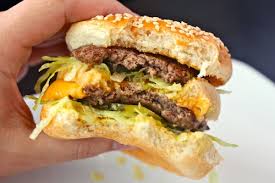 As a result of my posting of Bruce Springsteen’s Prove it all Night, a discussion ensued that sort of points to not just the essence of art, but the packaging of said commodity.
As a result of my posting of Bruce Springsteen’s Prove it all Night, a discussion ensued that sort of points to not just the essence of art, but the packaging of said commodity.
Peter noted that indeed the E-Streeters were a well rehearsed machine, conveying the The Boss’s message, however he noted the message was indeed that of Bruce, and while Steve does give cred to Bruce’s early material, he did not think that much of the band live.
Fair enough.
In fact, Steve noted in addition that the Bruce and Co. had pretty much become mainstream–the stuff of “average Joe’s”–and that in general, that told him he was not interested.
Again, fair enough.
Personally, I agree with both of them, and I use the argument of McDonalds, for the company of the Big Mac is surely the most popular and successful food selling machine in our country, let alone on the planet.
But, that does not necessarily mean the “BM” either tastes good, or is good for us.
Truth is, I like a Big Mac once in a while for some perverse reason, which is indeed odd since I do all of our cooking and prepare almost exclusively from scratch.
But, I also suspect the had we gone to the original McDonalds in Southern California in 1957 and ordered a double cheeseburger, it would have been good like a burger at Burger Me, in Truckee, would nail it today. I think both would hit the spot, just as were Burger Me suddenly franchised, the animal I would eat today would probably not be like the sandwich I would get in ten years.
I think as part of the musical parallel I pointed to, I loved the Clash through their first albums, and even saw them four times during their early years. But, once Combat Rock became anthemic to the “average Joe’s,” I lost interest, no matter how good the album might have been (I have obviously heard some cuts from it, but I never owned it, unlike London Calling, or Give ”em Enough Rope, or the first Clash album).
But, I do pose the path of three artists, starting with the great British folker, the late Nick Drake, who died of an amphetamine overdose in 1974, but never got a chance to make it with the average Joe’s. Although, his great tune, Pink Moon was used as a soundtrack for an ATT commercial, and two of his tunes, Magic, and River Man, did make the charts 30 years after his death after the release of a compilation album (Made to Love Magic) and related tributes in 2004.
Had he lived, would Drake still be so dark, so moody, and to me so hauntingly accessible (we could ask the same about Buddy Holly, but please leave the over-rated James Dean out of the conversation)?
How about the bay area band Jellyfish, who had a killer debut album (Belly Button) in 1990 that fostered a big time signing, and three years later the over produced (Queen sang back-up) and under delivered Spilt Milk which resulted with poor revues and the dissolution of the band. Heard of them, average Joe?
I thought not.
Then there is Steve’s childhood fave, KISS, whom he stands behind over their first few albums, who developed as dedicated a following, and as staged a performance as Springsteen et al. And, a band the average Joe’s love, it seems, as much as the Boss.
So, it seems the way of art is that bands or writers or painters or whatever do indeed start with a vision, and with the pain that was too much for Drake (who suffered from depression), and then either become another animal, as in Jellyfish and give up, or they simply evolve, succeed, and become boring and the apple of the average Joe eye?
